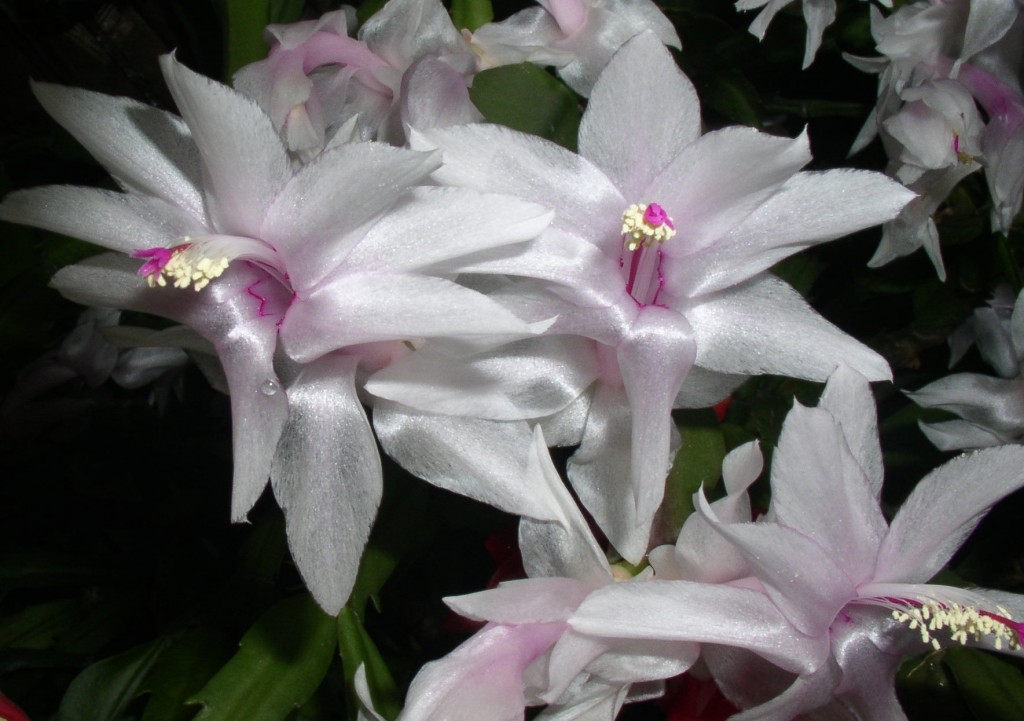Now that the holidays are behind us, decisions must be made regarding the plants we used to decorate our homes or received as gifts. Poinsettias, amaryllis, Christmas cactus, and cyclamen are traditional holiday flowers. Some are quite easy to keep as houseplants and will flower again if given the right conditions. Others are a bit more challenging; maybe it’s best to toss them onto the compost pile after flowering. You be the judge.
Perhaps the simplest to care for is the Christmas cactus. Many of these cacti are actually hybrids, called Zygocactus, and are not true Christmas cacti which belongs to another genus. In any case, the Christmas cactus can be forced to flower anytime from Thanksgiving through Christmas, provided that starting in September you withhold water from it and it experiences 13-hour nights and cool temperatures in the 55-60 degree range. This is fairly easy to accomplish as this is what normally happens outdoors.
Begin by putting the plant outside in late May in a shaded location, water it once a week or so, and fertilize it every other week with a water-soluble fertilizer. Move your Christmas cactus back into the house in late October when the threat of frost occurs. By then these plants are usually full of flower buds. To prevent bud drop, keep your plant in a cool room until the first flowers open; after that you may place it anywhere to enjoy. Once it has finished flowering, water your Christmas cactus lightly and give it bright but indirect sun. Be careful not to over water as it will rot if watered too heavily.
Another really easy plant to care for is the amaryllis. After it flowers, simply cut off the flowering stalk when it yellows, and keep the bulb watered and in a sunny or bright location. Amaryllis leaves are produced either after or along with its flowers. These leaves need to stay healthy and growing throughout the winter, spring, and summer; they nourish the bulb so it can bloom again. Like the Christmas cactus, amaryllis enjoys summer vacation outdoors in a sunny location. Water your plant a few times a week as needed, and fertilize it every other week or use a slow release fertilizer on the soil surface.
In September it is time to stop watering your amaryllis. I find the easiest way to do this is to move the plant into a garage and simply forget about it. This treatment forces the bulb into dormancy, a rest period during which the leaves dry up. After about ten weeks, the pot can be brought indoors and placed in a bright location. Give it a light drink of water and then hold off watering again until you see the flower bud start to emerge from the bulb. Amaryllis bulbs can be kept alive for years this way, and their flowers are very rewarding.
Poinsettias and cyclamen are a bit more challenging, so typically I don’t keep them from year to year. Poinsettias often are host to whiteflies, and cyclamen often suffer from corm rot or weak growth. Rarely do either of these plants put on the same flower show if saved as they do when they were originally purchased. Having worked at a greenhouse for several years, I can honestly say that maintaining healthy poinsettias and cyclamen is best left to the grower unless you have lots of space in your home and lots of time on your hands. That said, care information for both plants as well as for Christmas cactus and amaryllis can be found in the following fact sheets: Care of Holiday Plants and Forcing Bulbs for Indoor Bloom.
Alice Raimondo is Horticulture Consultant for CCE Suffolk. She can be reached at aw242@cornell.edu or 631-727-77850 x335.

